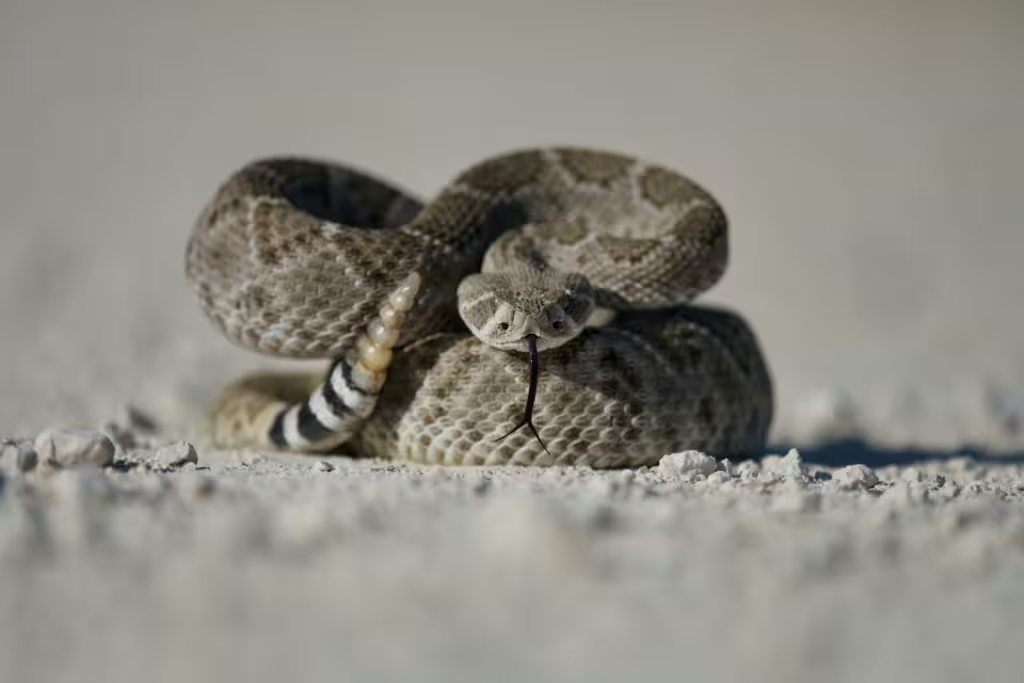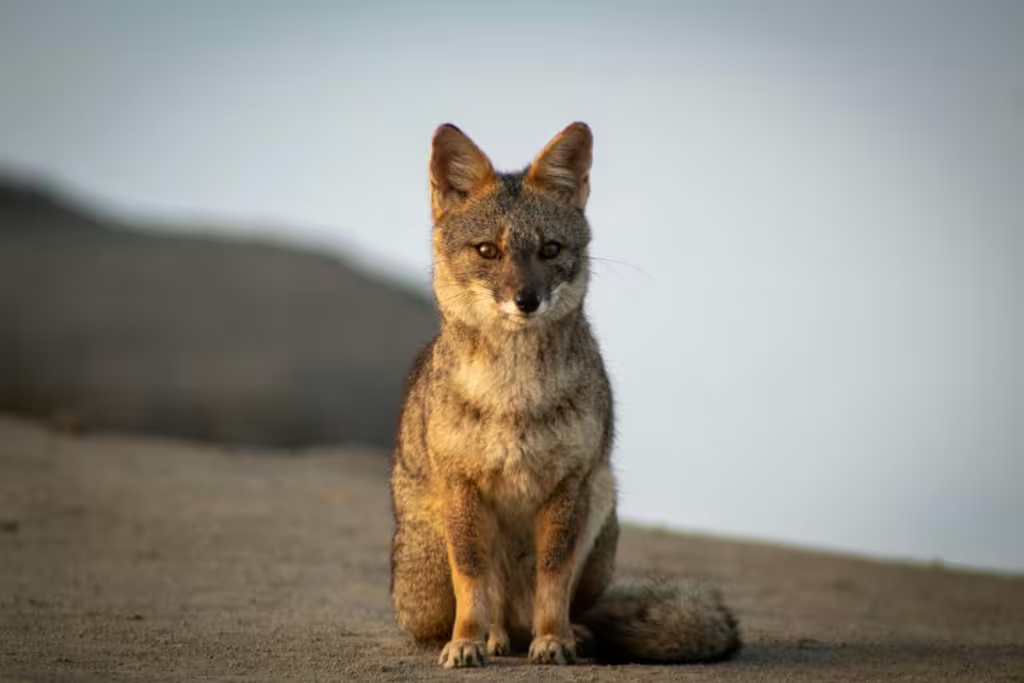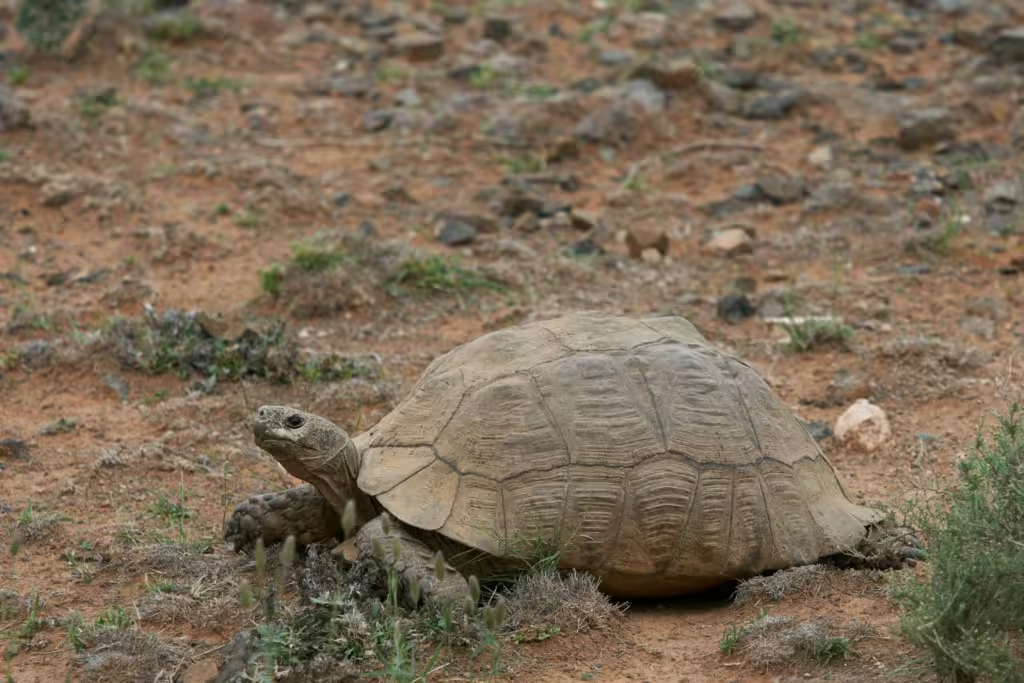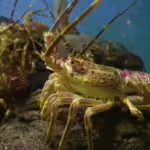A week ago, we took readers on an incredible journey to the jungles of Indonesia. Today, we continue our True Investigator World Tour by visiting one of the harshest biomes on the planet; the Mojave Desert. Stretching across southeastern California, southern Nevada, southwestern Utah, and a small portion of northwestern Arizona, the Mojave is one of North America’s most iconic landscapes—and also the hottest.
Across this vast and unforgiving expanse of sand, rock, and heat, temperatures can rise above 120°F (49°C). Rainfall—as one might expect in the desert—is sparse and unpredictable. Meanwhile, whipping winds sweep across salt flats and dunes, hampering movement and visibility both. Yet, even here, life has found a way to thrive.
Despite all appearances to the contrary, the Mojave is home to a multitude of plants and animals that have evolved remarkable ways to beat the heat. These creatures showcase nature’s boundless adaptability and ingenuity. In this article, we will brave the sands of the Mojave to explore a number of these unique species. Along the way, we will highlight the desert’s unique ecology, as well as its unique geography. By the time we move on to the next stop, perhaps you too will gain a new appreciation for the majestic Mojave desert!

The Lay of the Land
The Mojave Desert covers roughly 47,000 square miles, bounded by the Sierra Nevada to the west, the Great Basin Desert to the north, the Sonoran Desert to the south, and the Colorado Plateau to the east. Its defining feature is the presence of the Joshua tree (Yucca brevifolia), a spiky, otherworldly plant that marks the desert’s boundaries.
The terrain is highly varied: salt flats shimmer like glass under the sun, volcanic cinder cones rise in blackened heaps, sand dunes ripple like ocean waves, and rocky mountain ranges cut across the horizon. Valleys such as Death Valley—the lowest, hottest, and driest place in North America—push life to its limits. Rainfall averages less than 5 inches annually in many parts, and yet flash floods can transform dry washes into temporary rivers in minutes.
This diversity of landforms creates niches for different species. Some animals find refuge in rocky crevices, others burrow underground, and many adapt their activity patterns to avoid the harshest hours of the day.
Desert Survival Strategies
Living in a harsh environment like the Mojave necessitates some pretty intense survival strategies. In these places, plants and animals have had to evolve specific ways to conserve water, escape the pervasive, dangerous heat, and avoid predators in a fairly open landscapes. In deserts, three main strategies tend to dominate:
Behavioral Adaptations – The oppressive desert heat means that many animals have had to move to a nocturnal or crepuscular (active at dawn and dusk) lifestyle. During the day, they rest in cool, underground burrows, emerging when the sun goes down to feed, forage, and mate.
Physiological Adaptations – It might surprise you to know that some animals don’t even have to drink. That’s right, desert rodents like kangaroo rats have evolved ways to metabolize water from seeds, which means they never actually need a drink of liquid water.
Morphological Adaptations – Desert markings tend to sit at the drabber end of nature’s spectrum of astonishing colors, and for good reason. This is because pale coloration helps reflect sunlight. In the same way, many desert species possess large ears, which radiate excess heat, or have specialized limbs that allow steadier movement across shifting sands.
Miraculous Animals of the Mojave
In this section, we have narrowed down a list of some of the Mojave’s most amazing movers and shakers.
Desert Tortoise (Gopherus agassizii)
Desert tortoises are perhaps the perfect example of true desert adaptations. The Desert tortoise that lives in the Mojave can survive in this environment, dealing with extreme temperatures, drought, and food scarcity for between 50 and 80 years. They do this through a number of physical and behavioral adaptations. First and foremost, tortoises spend up to 95% of their lives in burrows as a way of escaping the desert heat.
They do have to emerge at sometime, however, primarily during the spring and after summer rainy seasons. While they’re out, they feed on grasses, wildflowers, and cacti. How do they survive so long without water, you may ask? Well, the Desert tortoise possesses a remarkable water-saving adaptation that allows them to store water in their bladders and reabsorb it as needed; such as during a drought. These remarkable reptile can go more than a year without fresh water.
Mojave Rattlesnake (Crotalus scutulatus)
The endemic Mojave Rattlesnake is one of the most venomous snakes in North America. As a result, this serpent is feared and respected by those who live adjacent to the desert. Mojave rattlesnakes have a potent neurotoxic venom, which makes it unique amongst other rattlesnakes, which tend to have hemotoxic venom. The light greenish-brown color of the snake, coupled with its distinctive diamond-like patterns, allow it to blend in seamlessly with desert vegetation. This degree of desert camouflage means that the snake is usually an ambush predator, striking at rodents without their unwary prey even knowing that they were nearby. It also doesn’t help that the rattlesnake has a swift strike.
Roadrunner (Geococcyx californianus)
Most readers will only be familiar with the Roadrunner because of the Warner Bros. cartoon character of the same name. Yet, despite not being as animated as the aforementioned nemesis of Wiley coyotes everywhere, the greater roadrunner is real superstar in the Mojave. This real roadrunner may not be able to break the sound barrier, but it can sprint up to 20 miles per hour, chasing down lizards, snakes, and insects; it’s favorite prey. Unlike many desert birds that avoid reptiles (for good reason, mind you) the roadrunners of the Mojave actively hunt rattlesnakes for food. Their speed, reflexes, and precision are a foils to the rattlesnake’s strikes and poison, and allow the bird to deliver lethal blows with their beaks without being bitten themselves.

Kangaroo Rat (Dipodomys spp.)
We divert from birds and snakes for a bit to talk about some of the tiniest, most extraordinary residents of the Mojave. We mentioned the kangaroo rat earlier in its capacity as a water conservation expert, but these adorable rodents are experts in desert survival behavior for several reasons. Not only are their kidneys so efficient that they can extract water from mere seeds, their strong hind legs and wide ears are perfect for evading predators, and regulating their body temperature. In addition, kangaroo rats live a nocturnal lifestyle which shields them from the heat. That said, they are vital to the desert food chain, and even their most effective evolutionary traits cannot protect them from the owls, foxes, and serpents that prowl the sands of the Mojave.
Kit Fox (Vulpes macrotis)
Speaking of foxes, did you know that the kit fox is one of the Mojave’s most endearing predators? These cuddly-looking little canids might seems like perfect pets in the making, but don’t be fooled. Kit foxes are ferocious and determined nocturnal hunters, hunting down rodents, rabbits, lizards, and insects with relative ease. They are swift and lightweight, able to dart through sparse desert vegetation and run on sand without impediment. They also have a set of oversized ears that allow them to both radiate heat and hear better than your average prey animal.
Burrowing Owl (Athene cunicularia)
Unlike most owls that live and hunt from the tops of trees or barn eaves, burrowing owls are content to live and hunt on the ground. They also differ from most other owl species in that they are most active during the day, not at night. So-named for the homes they make in abandoned burrows dug by prairie dogs or ground squirrels, burrowing owls stand a mere 10 inches tall. Like the kit fox, though, don’t let their diminutive stature fool you. Burrowing owls are fierce hunters of insects, rodents, and desert reptiles.
Insects and Other Small Wonders
Beyond the larger, more charismatic animals of the desert, the Mojave’s undergrowth actually teems with a fascinating array of insects, arachnids, and other assorted arthropods. Some examples of these include scroprions, desert tarantulas, darkling beetles, and strangest of all, large wasps known as Tarantula Hawks. These metallic blue insects inject tarantulas with paralyzing venom, then lay eggs inside the helpless spider. When the larvae hatch, they eat the hapless tarantula from the inside out!

True Investigator Says…
As you can see. the Mojave Desert is more than just a barren expanse of endless sand and unimaginable heat—it is a vibrant habitat filled with extraordinary animals of every shape and size. Resilient, cunning, and resourceful, the animals of the Mojave are living representations of adaptation and survival. The more we take the time to visit and learn about biomes like this, the better equipped we are to understand their ecological importance.
At the same time, we might even learn a thing or two about the incredible feats of survival that living things are capable of, and be inspired by those methods so that, when the time comes that much of our own wold is inhospitable due to climate change, we can be ready to beat the heat in our own way.
Discover more from TrueInvestigator
Subscribe to get the latest posts sent to your email.


